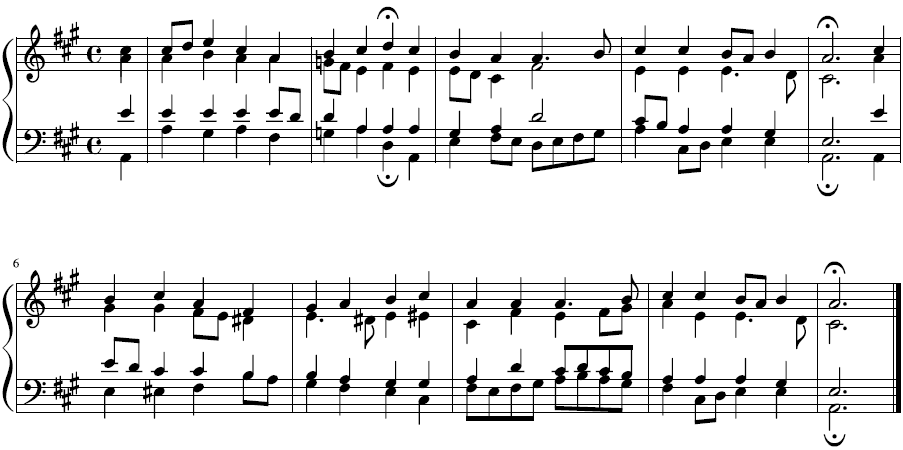 We're finally putting together a lot of what I've covered in this year's Blogging A-to-Z challenge. Today I'll touch on voice leading (known as "part writing" in the UK), which describes how individual voices in a composition work separately to create a musical whole.
We're finally putting together a lot of what I've covered in this year's Blogging A-to-Z challenge. Today I'll touch on voice leading (known as "part writing" in the UK), which describes how individual voices in a composition work separately to create a musical whole.
We already talked about counterpoint, in which we saw how two vocal lines interact while moving independently of each other. That's the essence of voice leading. But when you add more voices, the rules become a bit more complex.
Open Music Theory has a good explanation of the problems that voice leading aims to solve:
The “fundamental musical problems” we will address in the study of counterpoint center around the way in which some basic principles of auditory perception and cognition (how the brain perceives and conceptualizes sound) play out in Western musical structure. For example, our brains tend to assume that sounds similar in pitch or timbre come from the same source. Our brains also listen for patterns, and when a new sound continues or completes a previously heard pattern, it assumes that the new sound belongs together with those others. ... These abilities are also what allows music to have the emotional effect that it does on so many people. Whether or not a composer or songwriter is aware of the science and psychology of hearing, a masterful composer mediates and plays with these basic concepts.
In short, voice leading "leads the ear" in service of the music as a whole.
The general rules are:
- Favor small intervals
- Avoid crossing lines
- Avoid parallel fifths and octaves
Here's a simple example that demonstrates how each voice can have its own life and still form a cohesive whole:

So what's going on in there? All four lines have their own melodies (particularly the soprano and tenor lines), I've avoided parallel 5ths and octaves in a couple of tricky spots while still maintaining a decent chord progression, and none of the lines cross—though they do, occasionally, trade notes. Notice the tenor D on the second beat of the 3rd measure followed by the alto D in the next beat.
(There's also a joke buried in there. Play each of the vocal lines separately and you'll find it. The joke explains why there's a bit of clunkiness between the second and third measures.)
But that's just me demonstrating a concept. Here's what a genius does, in the first of his nearly 400 surviving chorales:

(Bonus pdf file.)